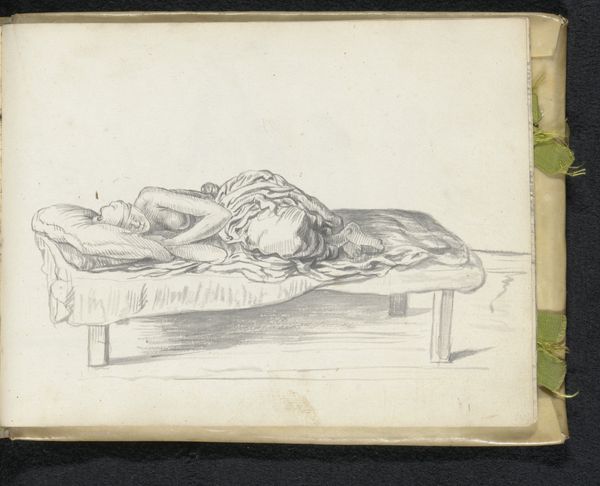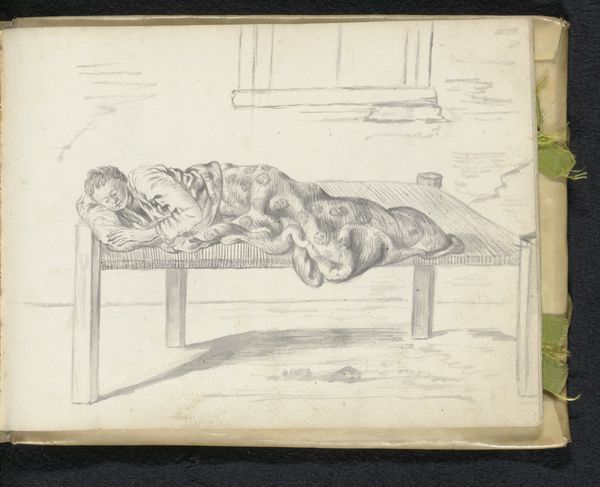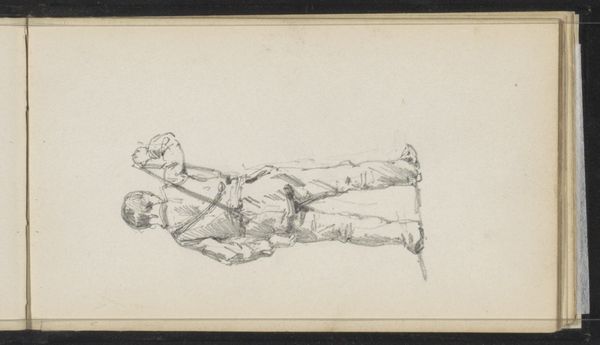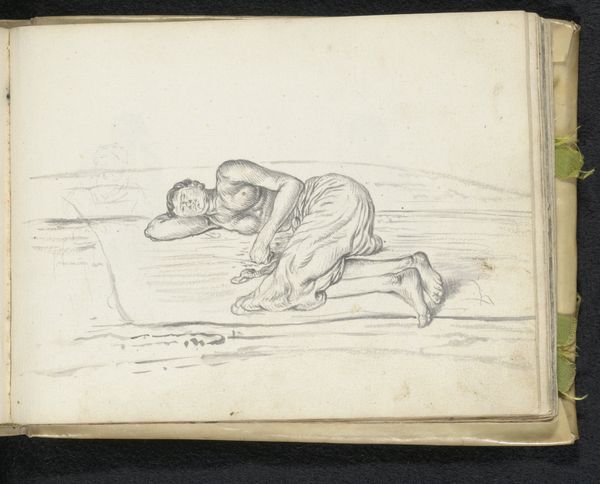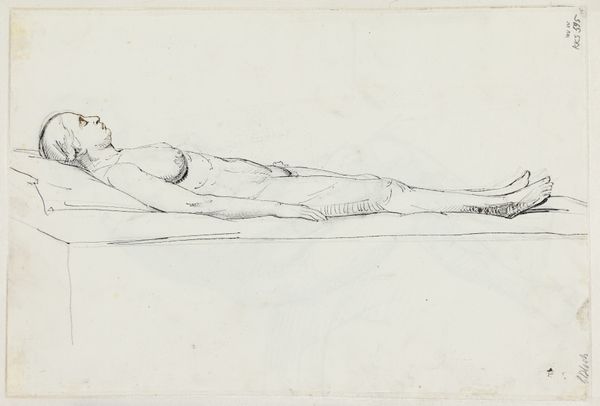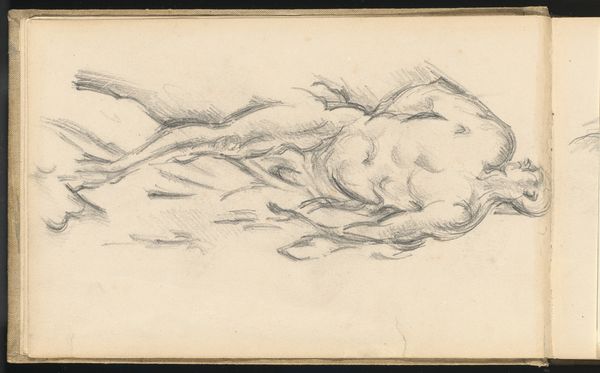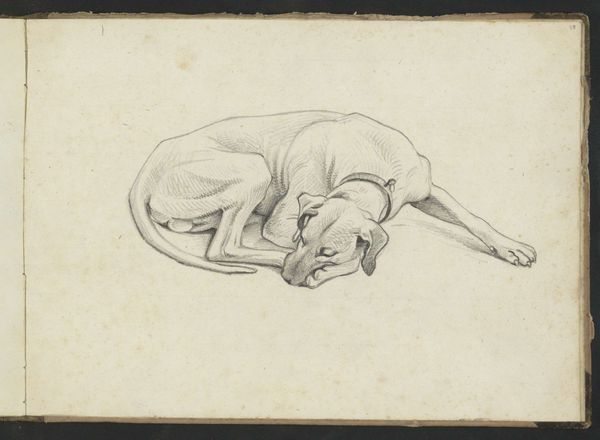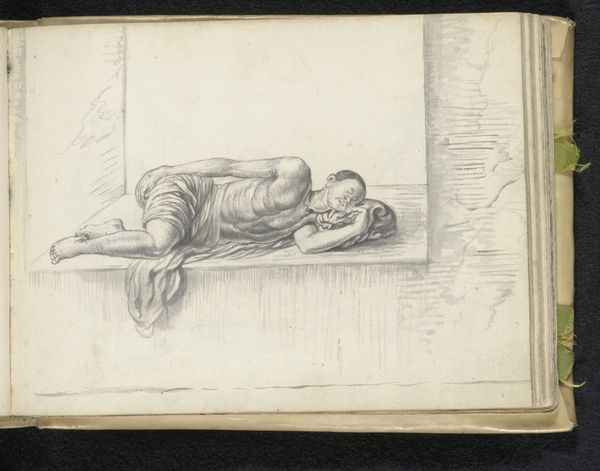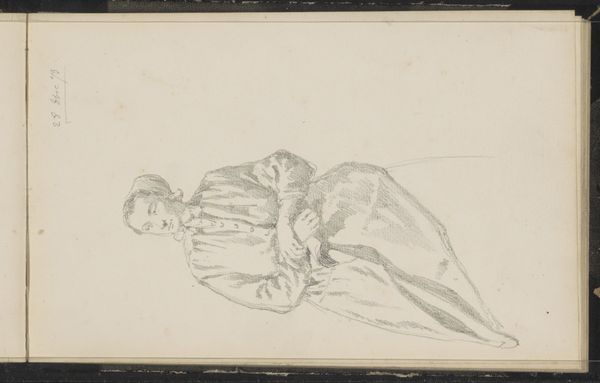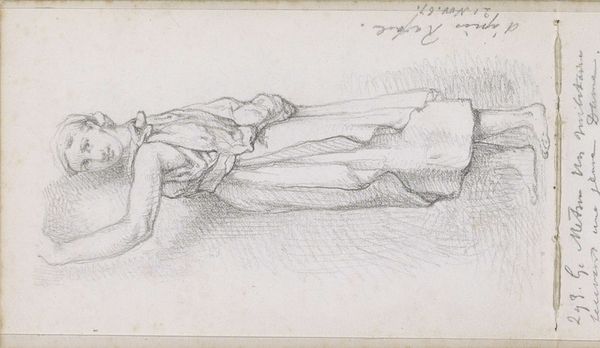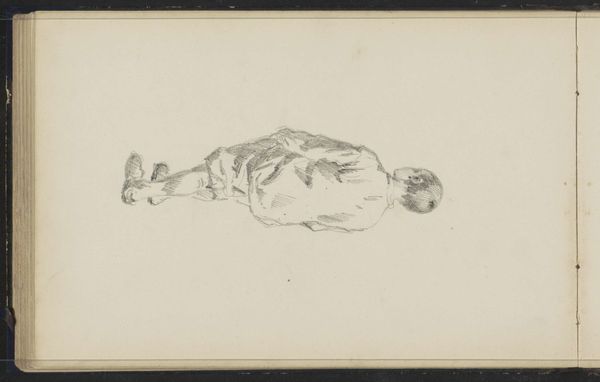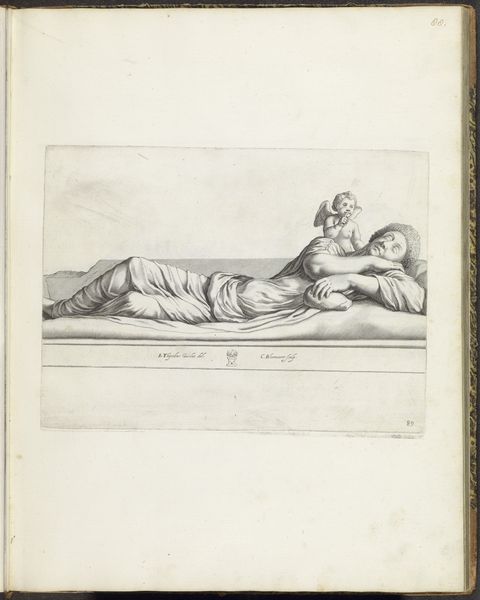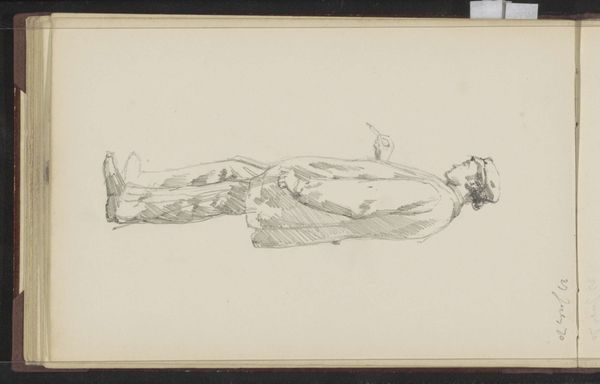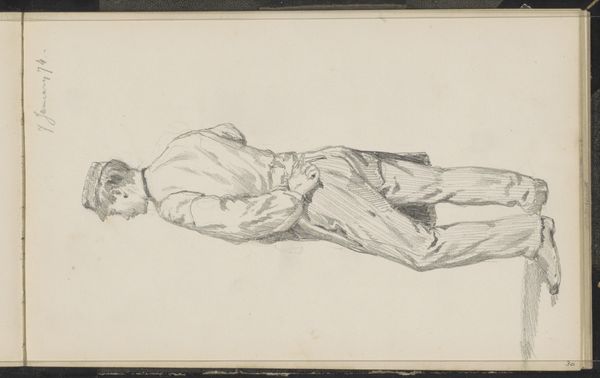
drawing, paper, pencil
#
portrait
#
drawing
#
baroque
#
paper
#
coloured pencil
#
pencil
#
genre-painting
Dimensions: height 148 mm, width 196 mm
Copyright: Rijks Museum: Open Domain
Curator: This is a drawing entitled "A Sinhalese soldier having a lie-down," created by Esaias Boursse in 1662. It's rendered in pencil and coloured pencil on paper. Editor: There’s something both vulnerable and unsettling about this figure. He’s resting, seemingly unguarded, yet he clutches his sword. What does it suggest about the Dutch presence in Ceylon at the time? Curator: Boursse was deeply engaged in representing what he saw with accuracy. Notice the rendering of fabric around the soldier's waist, the details of the musculature, and the foreshortening of his limbs. It speaks to an interest in verisimilitude. Editor: But isn't that 'verisimilitude' itself a product of a European gaze? Boursse, as an employee of the Dutch East India Company, inherently frames the scene through a colonial lens. He records, yes, but also arguably, codifies an image of the 'other'. Is the artist celebrating the subject or recording it in preparation of conquest? Curator: Perhaps, and yet there’s a lack of caricature or overt judgment. His focus appears to be on accurately portraying what he sees before him. Note also the interplay of light and shadow which gives the subject dimension. Editor: Precisely –the lack of overt judgement could also mask a more insidious intent to present a carefully neutral depiction for maximum political efficacy back home in Europe. Is that softness simply technical mastery, or is it designed to soothe European consciences regarding the ongoing colonial project in Ceylon? I find myself wrestling with that here. The soldier isn’t presented as ferocious or exoticized in stereotypical ways, which only raises more questions about the artist's objectives. Curator: It's certainly possible to see it that way, yes. The power dynamics present would inform any observation by a foreign artist in this period, I would think. What this image evokes today speaks perhaps to the long tail of colonialism. Editor: Indeed. I wonder what his own community would have made of it. The drawing itself provides much food for thought.
Comments
No comments
Be the first to comment and join the conversation on the ultimate creative platform.
